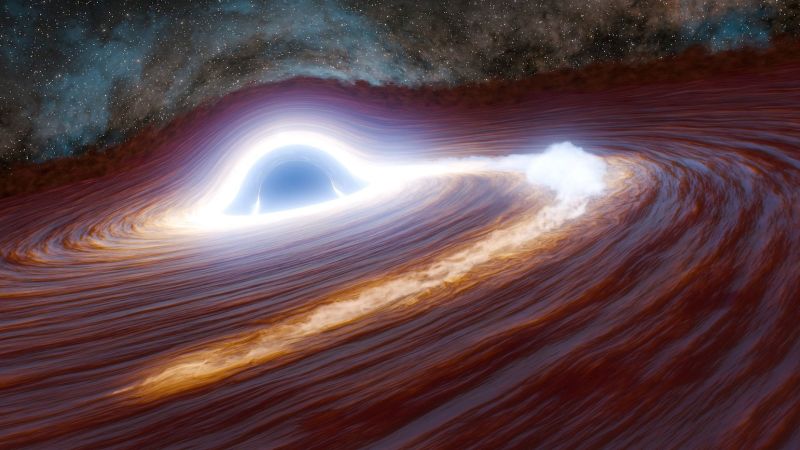Imagine a beacon so incredibly powerful that it outshines entire galaxies, a single point in the cosmos blazing with the luminosity of 10 trillion suns. This isn’t a scene from a science fiction epic; it’s a real-life cosmic event that recently left astronomers astounded. A supermassive black hole, the kind that anchors galaxies, just erupted with a flare of unparalleled magnitude, rewriting our understanding of these enigmatic gravitational giants and the violent spectacles they can unleash.
The Universe’s Most Extreme Light Show
Black holes themselves are, by definition, invisible. Their gravitational pull is so immense that not even light can escape. So, how does one “erupt” with light? The answer lies in the dynamic environment surrounding them. This record-breaking flare wasn’t the black hole glowing, but rather the titanic amounts of gas and dust being superheated and violently ejected from its accretion disk—the swirling vortex of matter spiraling inevitably towards the event horizon. When a black hole undergoes a feeding frenzy, it can generate incredibly powerful jets of plasma that are accelerated to near light-speed, radiating across the electromagnetic spectrum with breathtaking intensity.
The sheer scale of this particular eruption is what sets it apart. To visualize “10 trillion suns,” consider that our Milky Way galaxy contains hundreds of billions of stars. This single event, originating from a black hole at the heart of another galaxy, briefly outshone potentially thousands of entire galaxies combined. It’s a testament to the extreme physics at play in the universe’s most formidable accelerators, offering an unprecedented look into the energetic processes that shape cosmic evolution.
Unpacking the Cosmic Implications
Scientists have observed black hole flares before, but never one of this magnitude. This extraordinary event provides an invaluable opportunity to test and refine our models of black hole behavior, accretion disk dynamics, and the mechanisms behind cosmic jet formation. It challenges existing theories about how much energy a black hole can release and how quickly it can happen. Such powerful eruptions aren’t just pretty light shows; they play a crucial role in regulating star formation within galaxies by heating surrounding gas and preventing it from collapsing to form new stars.
The implications extend beyond just understanding black holes. This phenomenon offers a window into the early universe, where quasars—extremely luminous active galactic nuclei powered by supermassive black holes—were far more common and played a dominant role in galactic evolution. By studying such extreme events closer to home, we can glean insights into the conditions and processes that shaped the cosmos billions of years ago. As Dr. Lena Petrova, a lead researcher in astrophysics, remarked, “This isn’t just a fleeting bright spot; it’s a profound whisper from the very fabric of spacetime, telling us that the universe holds far more power and mystery than we dared to imagine.”
A Glimpse into Untamed Power
The discovery of this monumental flare is a stark reminder of the universe’s untamed power and its capacity for breathtaking, violent beauty. It pushes the boundaries of our current understanding, compelling scientists to look deeper, develop more sophisticated instruments, and refine their theoretical frameworks. Every such eruption is a dataset of unimaginable value, helping us piece together the cosmic puzzle and understand our place within this vast, dynamic, and often explosive universe. As our technology advances, allowing us to capture more of these fleeting, powerful events, who knows what other cosmic fireworks await discovery?




